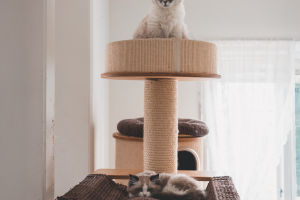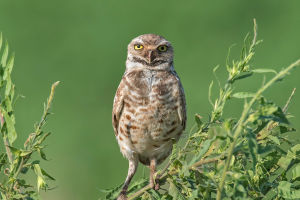Zebra Stripe Trick
Lykkers, have you ever wondered why zebras are covered in such bold black and white stripes? It's not just for show or fashion. These stripes play a key role in helping zebras survive in the wild, especially when it comes to avoiding predators.
In this article, we'll dive into the fascinating world of zebra stripes and explore how these seemingly simple patterns actually work as a defense mechanism. Trust us, it's a lot more complex—and effective—than you might think!
1. The Mystery of the Stripes
Zebras are often recognized for their striking black and white stripes, but these patterns have long been a source of mystery. Why do zebras have these unusual stripes, and how do they help them in the wild? Scientists have debated the purpose of these patterns for years, with several theories coming to light. Some believe the stripes help with temperature regulation, while others argue they play a role in social interactions within zebra herds. However, the most compelling explanation lies in how these stripes help zebras escape from predators.
When a predator like a lion or a hyena is on the hunt, it needs to be able to pick out a single target from the herd. This is where the stripes come in handy. The contrasting black and white patterns confuse the predator's vision, making it difficult to focus on one zebra. This “optical illusion” causes the predator to become disoriented, giving the zebra a better chance to escape.
2. The "Motion Disruption" Effect
One of the most fascinating aspects of zebra stripes is how they help disrupt motion. When zebras move together in a herd, their stripes create a dynamic, ever-changing visual pattern. This movement confuses predators who rely on vision to track their prey. The predator's brain is unable to focus on a single zebra, especially in a group of many moving zebras. The result is that the predator might not be able to single out one zebra to chase, increasing the chances of the entire herd escaping unharmed.
This “motion disruption” effect is particularly effective when zebras are running in a group. It's not just about the stationary stripes—it's about how the stripes create a moving, undulating effect that confuses predators. The predator is left uncertain, and in many cases, it gives up the chase altogether.
3. The Stripes and Fly Avoidance
While the primary benefit of zebra stripes is their role in confusing predators, they also serve a practical purpose when it comes to fly avoidance. Zebras, like many other animals in Africa, are often plagued by biting flies, particularly tsetse flies and other insects. These flies are not only annoying but can also spread disease. Research has shown that the black and white stripes of zebras help reduce the number of flies that land on them.
It turns out that the stripes create a visual effect that makes it harder for flies to land on the zebra's body. The alternating colors seem to confuse the flies, making it harder for them to focus on landing. This natural form of pest control adds another layer of protection for the zebra, ensuring it remains both safe from predators and free from harmful insects.
4. The Role of Stripes in Social Bonding
Zebras aren't just using their stripes for protection—they also play a role in social bonding within zebra herds. Each zebra's stripe pattern is unique, much like human fingerprints. These distinctive patterns help zebras recognize one another, especially in large herds. By identifying each other through their stripes, zebras can form strong social bonds, helping to maintain unity within the group.
The social structure of a zebra herd is crucial for its survival. When one zebra senses danger, it can alert the rest of the herd, allowing them to escape more efficiently. The stripes, in this case, are essential not only for individual protection but also for maintaining the cohesion of the entire group.
5. Why the Stripes Work So Well?
You might be wondering, why do these stripes work so well, even in the wild? The answer lies in the fact that predators have evolved to rely on certain visual cues when hunting. They are highly sensitive to motion and contrast, which is why the zebra's stripes are so effective. The strong contrast between black and white makes it difficult for predators to focus on a single zebra. The stripes don't just confuse the predator—they also hide the zebra's body shape, making it harder for the predator to judge its size or detect its movements.
Moreover, the stripes blend in perfectly with the natural environment. The tall grasses and shrubs of the African savannah often create similar patterns, which further help to camouflage the zebra. The stripes are not just a visual defense; they are a perfect blend of survival strategy and adaptation to the environment.
6. What We Can Learn from Zebras?
Lykkers, the zebra's stripe defense is more than just an amazing survival tactic. It's a reminder that nature often provides the most creative solutions to problems. From the way the stripes confuse predators to how they help the herd stay united, we can learn a lot from the zebra's natural design. Sometimes, it's not just about standing out but also about blending in at the right moment and using your environment to your advantage.
In our own lives, we might find ourselves facing challenges where we need to think creatively about how to approach them. Whether it's finding ways to handle stress, manage difficult situations, or work together as a team, there's a lot we can learn from the zebra's ability to use its unique traits for protection and success.
Conclusion: Nature's Perfect Camouflage
The zebra's stripes are a brilliant example of nature's ability to adapt and protect. From confusing predators to avoiding flies, these stripes serve multiple purposes that increase the zebra's chances of survival. We can all take inspiration from the zebra's strategy, whether it's through adapting to our own environments or relying on teamwork and creativity to overcome challenges.
So, the next time you see a zebra, remember that its black-and-white stripes are more than just a fashion statement—they're a survival tool that has been honed over centuries of evolution. Let's embrace the lessons of the zebra, and who knows? We might just become a little better at navigating our own challenges.
-
 Cat Falling TrickHow Do Cats Always Land on Their Feet? Discover the Secrets Behind Their Incredible Falling Skills!
Cat Falling TrickHow Do Cats Always Land on Their Feet? Discover the Secrets Behind Their Incredible Falling Skills! -
 Butterfly Love SignalsScent of Love: How Butterflies Use Invisible Perfume to Flirt, Impress, and Find Their Perfect Match in the Air!
Butterfly Love SignalsScent of Love: How Butterflies Use Invisible Perfume to Flirt, Impress, and Find Their Perfect Match in the Air! -
 Owl Love CallsWhy Do Owls Hoot All Night? Discover How These Mysterious Birds Flirt Loudly in the Dark to Find True Love!
Owl Love CallsWhy Do Owls Hoot All Night? Discover How These Mysterious Birds Flirt Loudly in the Dark to Find True Love!
Copyright © zogu 2021 - 2025. All Right Reserved.